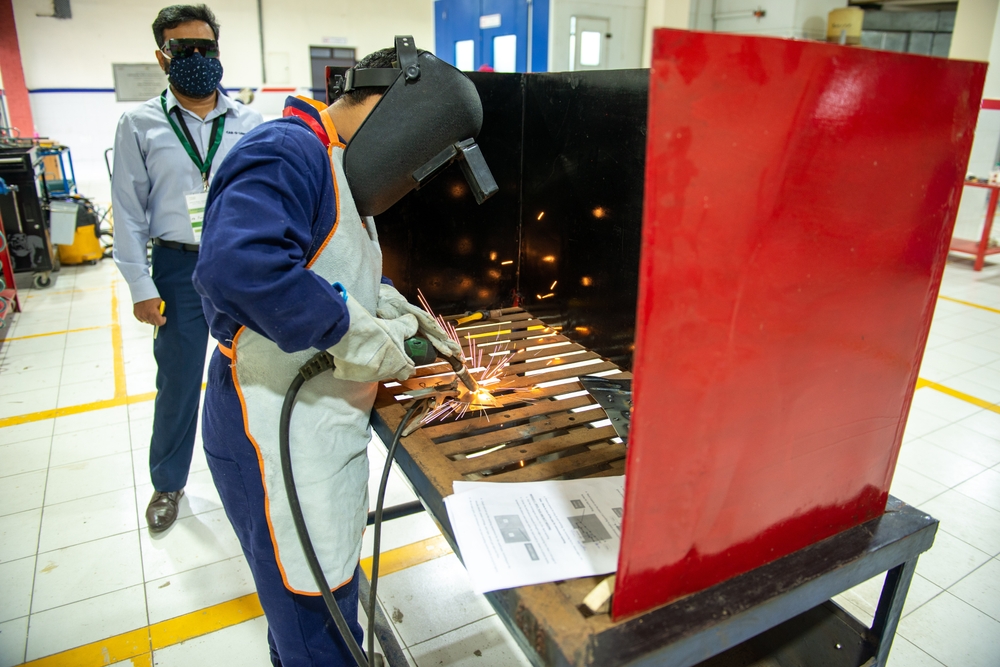When Kim Rider and her team contact a former student, they aren’t just checking in — they’re also gathering data.
Rider oversees career and technical education in Allen Parish, a region of rural Louisiana known for pine forests and the state’s largest casino. The 4,000-student school district offers classes in agriculture and health sciences, courses in coding and welding, and internships at the local hospital and the district offices.
Yet Rider can’t be sure that her program steers students toward successful careers. That’s because Louisiana, like many states, lacks a system for tracking students once they enter the workforce. To follow students’ career paths, Rider and her colleagues must ask the graduates themselves for updates.
“That’s about what we can do right now because we don’t have the tracking system,” she said. Without one, “How accurately can we see if these programs are truly leading to viable careers?”
Adult employment outcomes are disconnected from K-12 data sets
As college costs soar and demand for skilled labor rises, programs that prepare students for well-paid work are gaining popularity. About 85 percent of high school graduates in 2019 had taken at least one course in career and technical education, or CTE. In 2018, Congress increased annual funding for CTE, which now exceeds $1.4 billion. And in 2022, 36 states enacted policies promoting career training for high schoolers, college students, and adults, according to Advance CTE, a professional organization for state CTE leaders.
Yet many states struggle to answer a basic question: Is career education working?
Their inability to answer stems from disconnected data. Due to student privacy concerns, a number of states fail to connect their K-12 school and workforce data sets. In effect, students fall off the states’ radar when they start working.
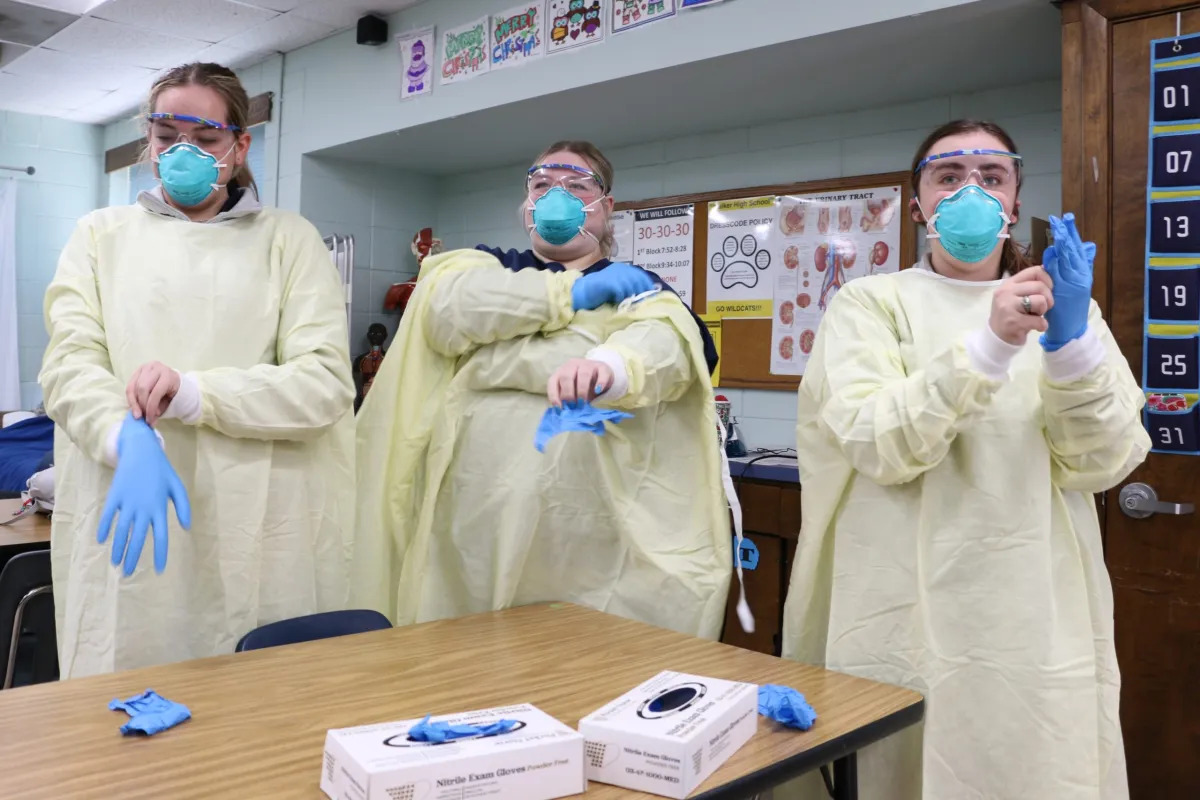
Patrick Wall/Hechinger Report
Students suit up for medical assistant class at Walker High School in Livingston Parish, Louisiana.
Now, Louisiana is one of a few states seeking to combine its data sets in order to track students from preschool into college and careers. Until then, students’ post-high school employment outcomes remain a mystery. Do former CTE students find jobs in the industries they studied? Do they earn good wages? Prospective CTE students and policymakers have no way of knowing.
“You can’t see that in most places,” said Daniel Kreisman, an economics professor at Georgia State University who helped launch an effort to inform CTE policymakers by compiling data and producing research. “Without that, they’re making decisions in the dark.”
Louisiana bet big on career education. Beginning in 2014, the state sought to improve CTE instruction, better align course offerings with the job market and increase funding. By 2018, the number of industry-recognized credentials students earned, signaling they attained specific job skills, had grown fivefold.
[Related: 7 AI trends that could reshape education in 2024]
Yet nearly a decade since starting the overhaul, the state still hasn’t shown that CTE gives students a career boost. Officials can’t study the long-term outcomes because in 2014 Louisiana lawmakers passed one of the nation’s strictest student-data privacy laws, which blocked state agencies from sharing student data.
One upshot is that policymakers cannot see where public school graduates work or how much they earn. Another consequence: Louisiana is one of just five states that do not report to the federal government exactly how many CTE students find jobs soon after high school, a U.S. Education Department spokeswoman said — despite a law requiring states to report students’ post-CTE outcomes. (Louisiana does report on other outcomes, such as college enrollment.)
At a legislative hearing in 2020, a Louisiana education department official said the reporting lapse could cost the state $21 million in annual federal funding for career education. (A department spokesman recently said no funding was lost.) Another agency official said she had been “begging” for years to see former CTE students’ employment records, but the privacy law forbade it.
“Are we preparing them for a career in the fields that we say we are?” Jill Prather-Cowart, then an assistant superintendent, asked lawmakers. “I think we’re doing a great job, but I have no data or research.”
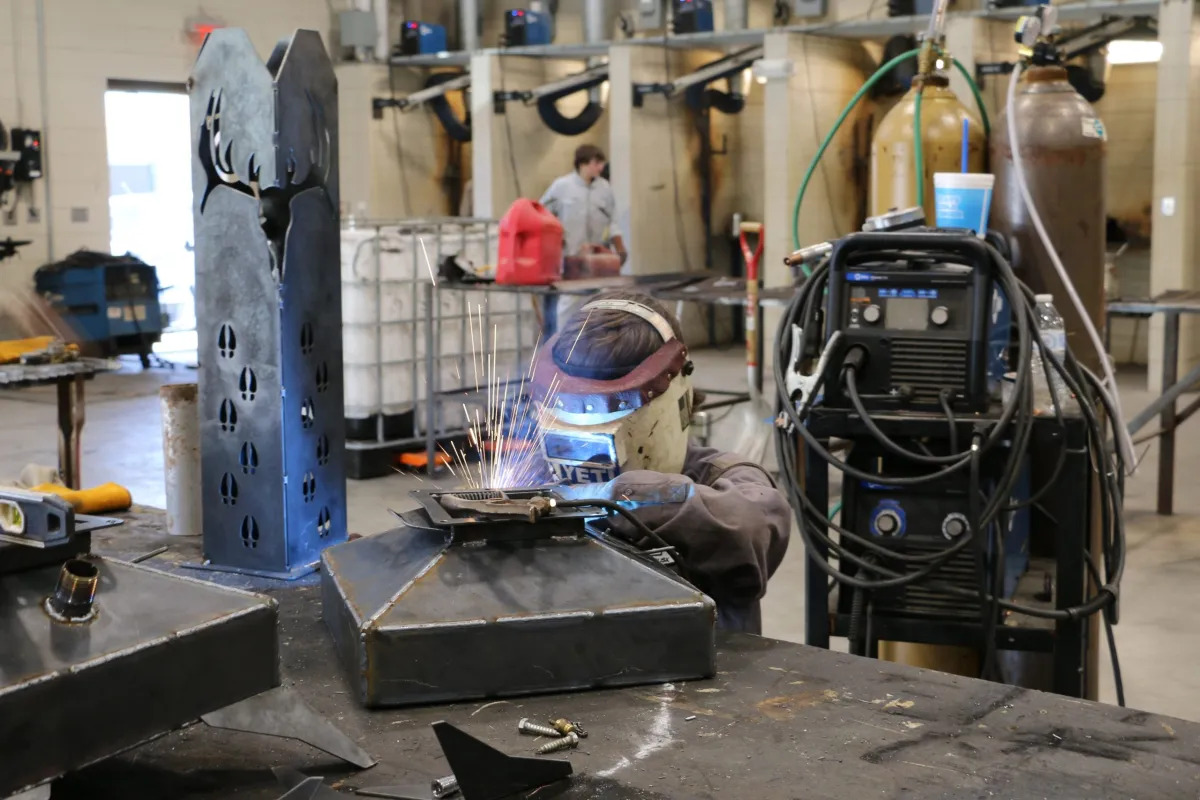
Patrick Wall/Hechinger Report
A student puts the final touches on a steel fire pit during his welding class at Walker High School in Livingston Parish, Louisiana.
Louisiana’s blind spot is not unique. Only 27 states maintain data systems that connect education and employment information, according to a 2021 analysis by the Education Commission of the States. The rest keep school and work data separate.
“The information is collected, but right now it’s not serving anyone,” said Paige Kowalski, executive vice president of the Data Quality Campaign, a nonprofit that pushes for preschool-to-career data tracking. She added that, even in states with connected data systems, the information is often inaccessible to school districts and the public.
Put to better use, data showing how CTE graduates fare in the labor market could provide valuable insights, advocates say. Policymakers could troubleshoot CTE programs whose graduates struggle to find jobs, while schools could use positive outcomes to attract business partners and students could review data about graduates’ employment rates and earnings before deciding on a CTE program.
“It would give students more of an option to see how it could affect their future,” said Madison Badeaux, a 12th grader at Walker High School in Livingston Parish, Louisiana, where she took a medical assistant course this fall.
Lacking longitudinal data, some states survey high school graduates about their careers, but the responses often are scant and unrepresentative. School districts sometimes try to collect their own data by contacting former students and local employers or scouring LinkedIn, but the method isn’t feasible for larger districts.

Patrick Wall/Hechinger Report
Brandi Desselle, the CTE coordinator for Livingston Parish Public Schools in Louisiana, said she’s looking forward to changes that will allow her to more easily track student job outcomes.
“That is something I would love to be able to do, but we don’t have the manpower,” said Brandi Desselle, CTE coordinator for Livingston Parish Public Schools, which enrolls some 27,000 students.
States that don’t track graduates’ careers still must report short-term outcomes. The federal career education law, called the Perkins Act, requires states to choose at least one measure of CTE quality: the share of high school CTE students who earn job-skill credentials, attain college credits, or participate in work-based learning, such as internships or apprenticeships.
But achieving those benchmarks is no guarantee of career success. For example, a 2020 analysis found that only 18 percent of the credentials CTE students earn are sought by employers in job postings. And a 2022 study, focused on Texas, found that most former CTE students work in industries or choose college majors unrelated to the credentials they earned.
[Related: What happened when a South Carolina city embraced career education for all its students]
Although credentials vary widely — from Microsoft Office specialist to emergency medical technician — states’ reported data can mask differences in students’ career preparation. For example, Louisiana reported that about 54 percent of CTE students in 2022 earned industry-recognized credentials, but a state task force found that only 6 percent of CTE graduates that year earned advanced credentials, which are more likely to help students secure high-wage jobs.
“The attainment of a credential, in and of itself, is not success,” said Erin Bendily, vice president for policy and strategy at the Pelican Institute for Public Policy, a Louisiana think tank.
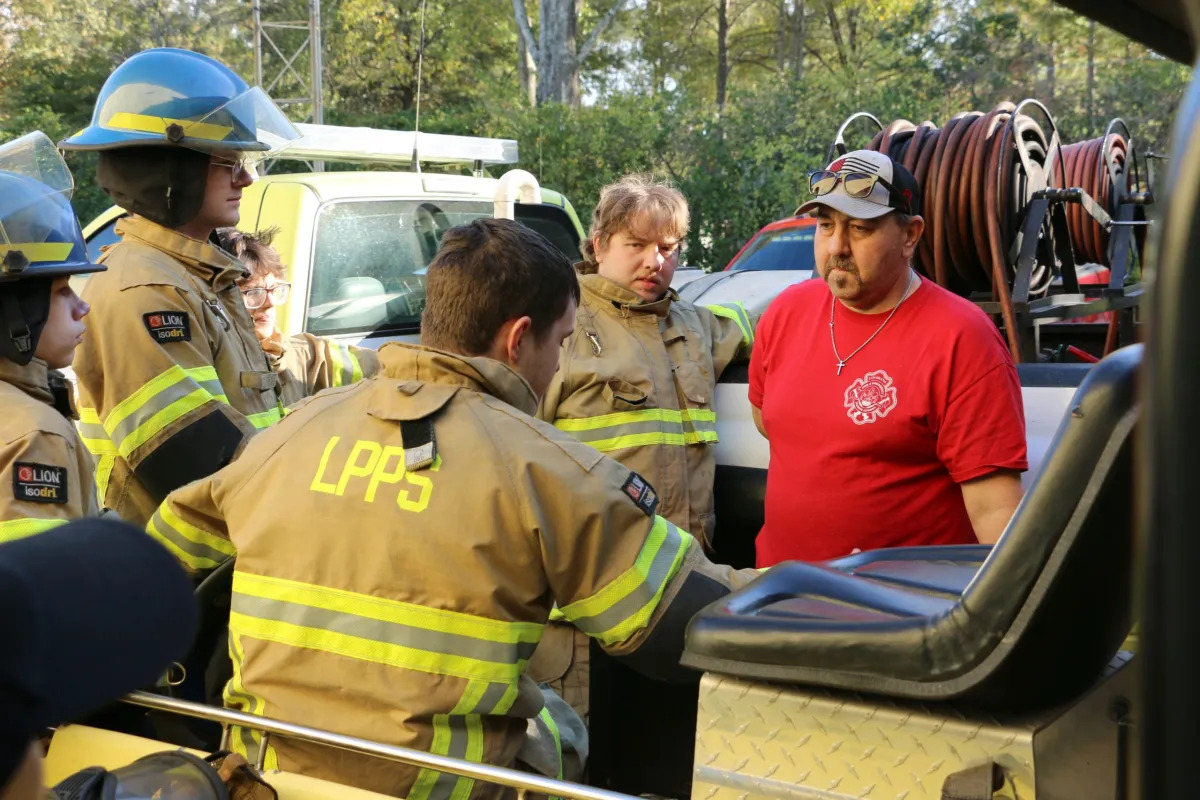
Patrick Wall/Hechinger Report
A firefighter training class at Walker High School in Livingston Parish, Louisiana has students climbing ladders and rolling hoses. Several graduates are now working as firefighters, according to their training officer.
The U.S. Department of Education has long promoted school-to-workforce data tracking. Since 2006, it has awarded states more than $900 million to create data systems that can track students over time, and is working on an effort to help states share employment data. Still, as of 2020, only 35 percent of states and territories included workforce data in their student tracking systems, according to a department survey.
States that do connect school and work data, such as Florida and Maryland, have found that taking career courses in high school can lead some students to earn higher wages after graduation. (Maryland’s data, in line with other research, suggests that CTE training in skilled trades like construction produces the biggest wage boost.) California has spent years developing its own Cradle-to-Career Data System, set to launch this year, which should shed light on students’ long-term outcomes.
Emily Passias, deputy executive director of Advance CTE, said she expects more states to follow suit as lawmakers seek evidence that career education warrants the investment.
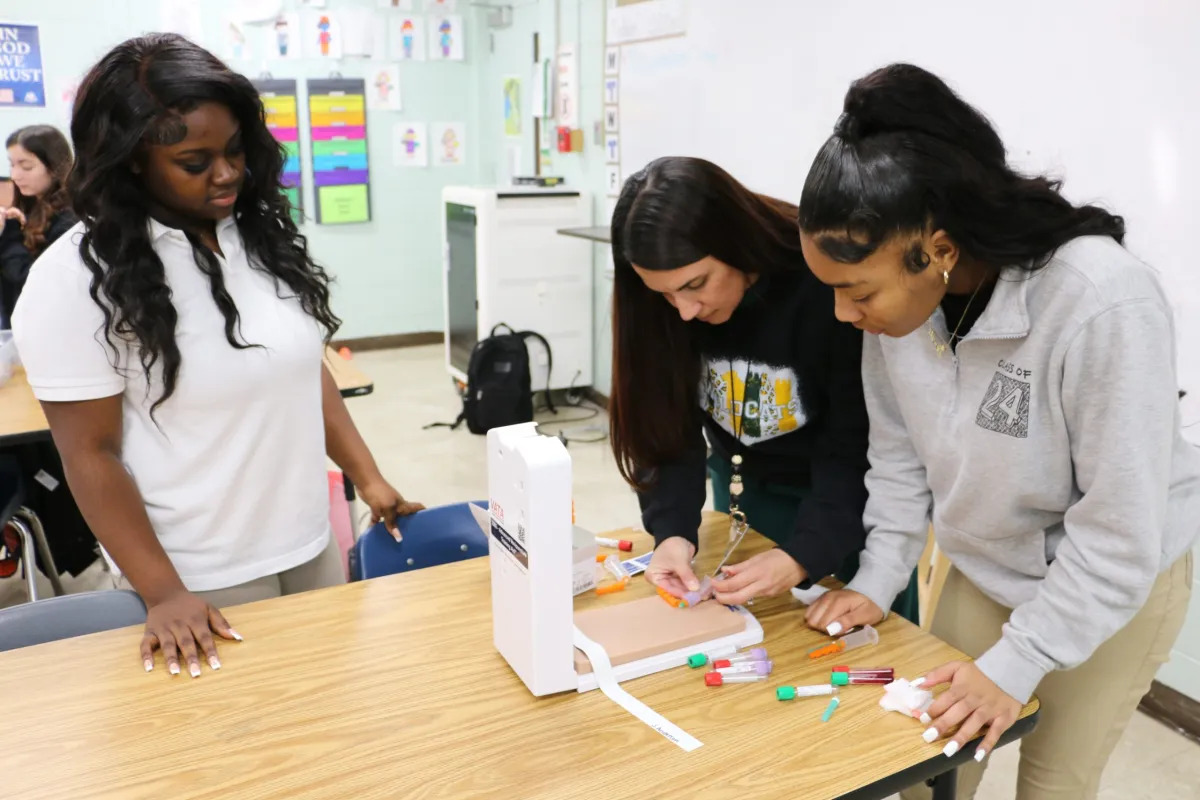
Patrick Wall/Hechinger Report
Students practice drawing blood in a Walker High School class that trains medical assistants. Programs such as these are popular in the Livingston Parish, Louisiana high school, but school leaders say they have a hard time determining if they are leading to jobs in the field.
“Our state legislators are asking the right questions,” she said. “How does X program affect Y labor market outcomes?”
In Louisiana, lawmakers might soon get some answers.
In 2022, Louisiana enacted a law requiring the state workforce commission to share high school graduates’ employment data with the education department. To comply with the privacy law, parents must consent to the tracking, which ends when students turn 26, and the employment records must omit social security numbers. Data-sharing was set to begin in December.
[Related: Beer making for credit: Liberal arts colleges add career tech]
Under a separate law enacted last June, Louisiana is building a new system called LA FIRST that will combine data from multiple state agencies, including education and workforce. The data will inform annual reports, including one on students’ college and career outcomes.
Knowing how each CTE program’s graduates fare in the labor market will help the state identify which programs to expand or improve and give other districts models to emulate, said Ernise Singleton, who oversees college and career readiness for the Louisiana education department.
“Hopefully this data will allow a lot more transparency across the state in seeing what others are doing that’s leading to success,” she said.
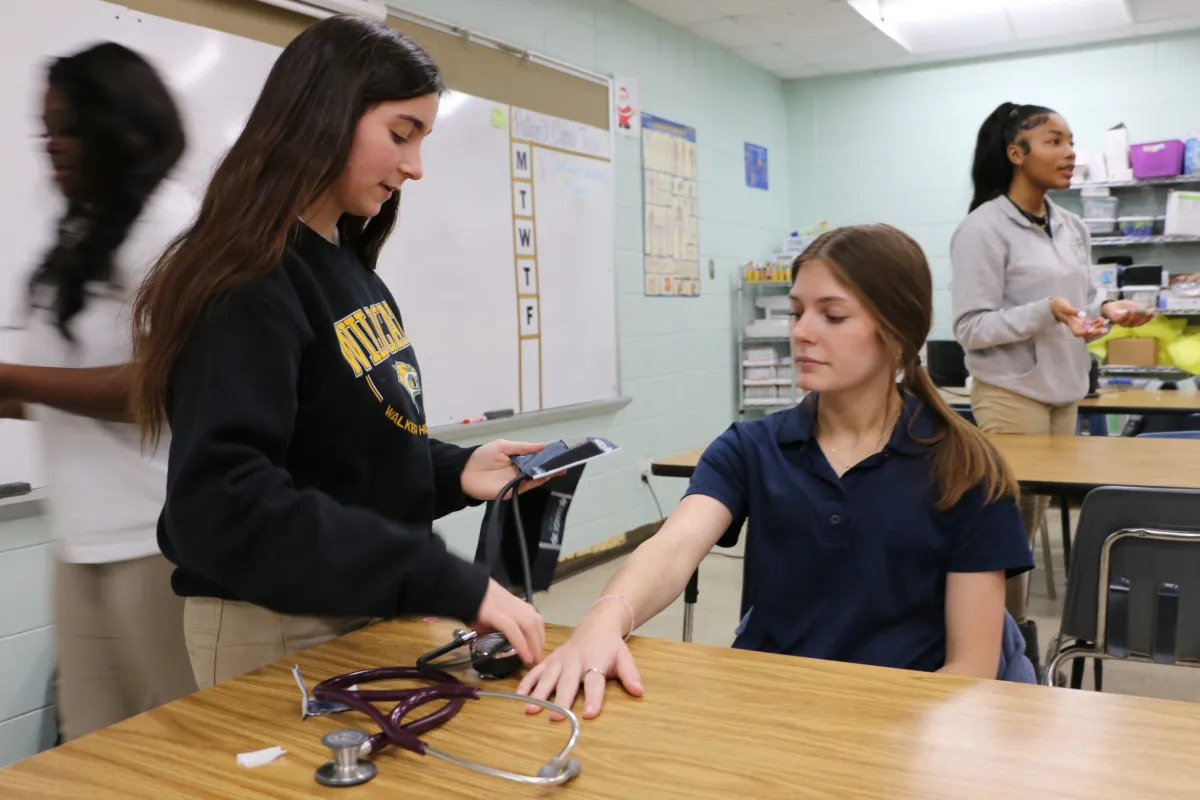
Patrick Wall/Hechinger Report
A student prepares to take a blood pressure reading in a medical assistant class at Walker High School in Louisiana.
As of December, the participating agencies were still finalizing data-sharing agreements, said Stephen Barnes, director of the Kathleen Babineaux Blanco Public Policy Center at the University of Louisiana at Lafayette, which is managing the system. Due to privacy concerns, it is not yet clear whether the system will report on each school districts’ student outcomes or only statewide trends, Barnes added.
“We want the insights to be actionable,” he said. “But certainly one of the broad concerns we have is protecting confidentiality.”
On a recent afternoon, Desselle, the CTE coordinator in Livingston Parish, gave a tour of the career programs at Walker High School. In the welding shop, students put the final touches on steel fire pits that will sell for $200 each. One senior was scheduled to begin working for a welding company the day after he graduates.
In a medical assistant class, where students demonstrated how to draw blood and measure blood pressure, a 12th grader said she planned to become a labor and delivery nurse. And in a firefighter class, while students climbed ladders and rolled up hoses, a training officer said several of last year’s graduates now work for fire departments.
The anecdotes suggested the school was putting students on a path to successful careers. But exactly how many students land good jobs and keep them? The school won’t know until the state shares its data.
***
Patrick Wall is an award-winning journalist based in New Orleans. Previously Walls was a senior national reporter at Chalkbeat where he wrote about LGBTQ students, pandemic recovery efforts, and other critical issues in K-12 education.
This story about career and technical education was produced by The Hechinger Report, a nonprofit, independent news organization focused on inequality and innovation in education. Sign up for the Hechinger newsletter.


